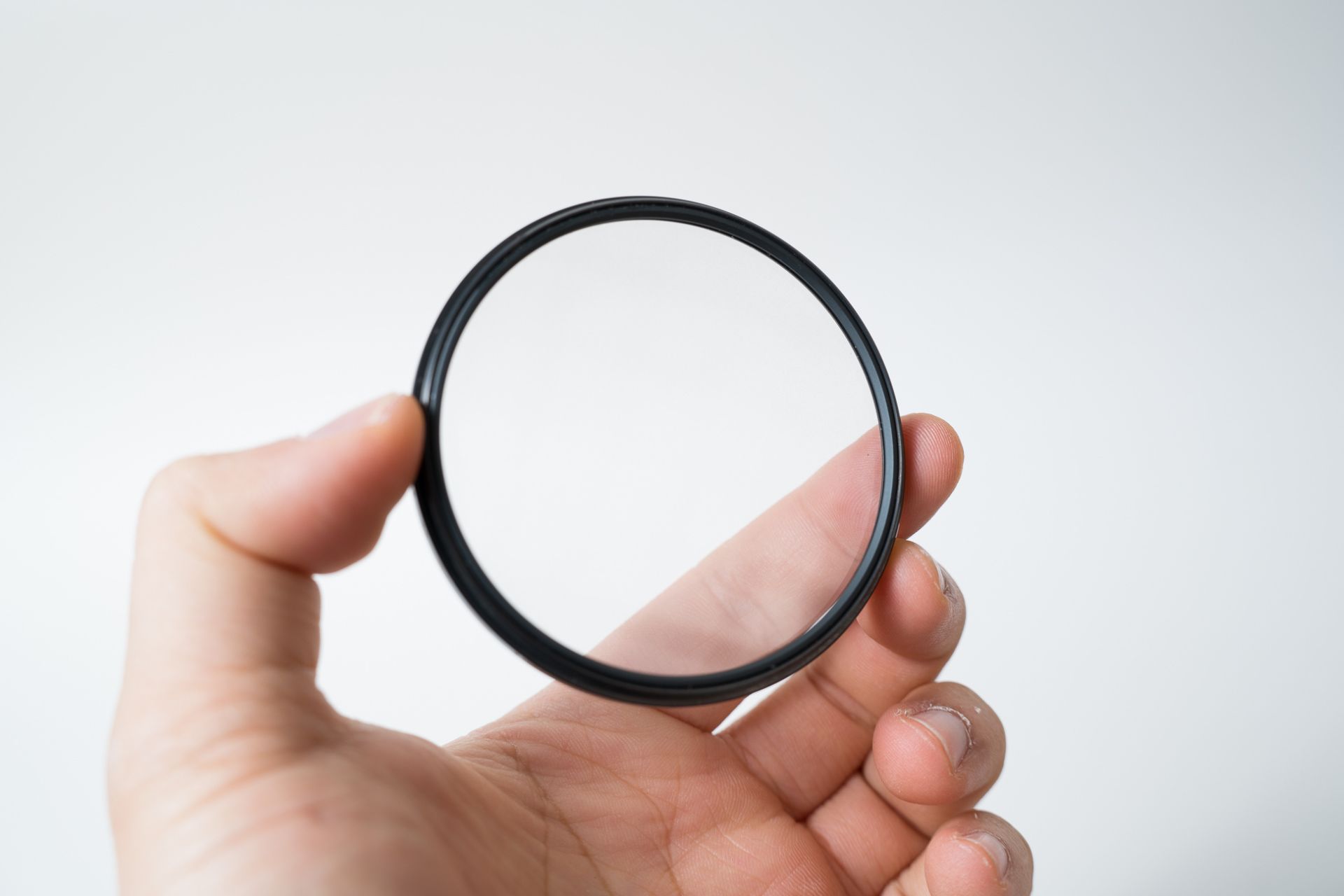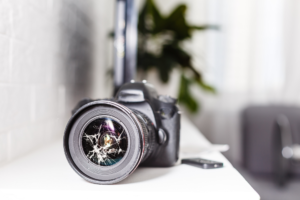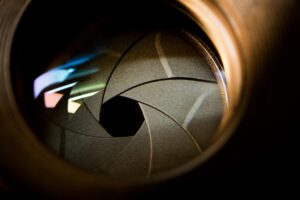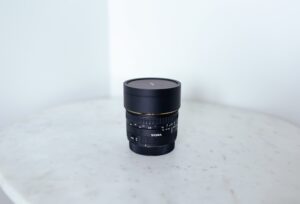Are lens filters necessary for modern photography? The short answer is: it depends on your needs and photography style.
While some photographers swear by them for protection and image enhancement, others believe they’re optional.
Dive in with us as we explore the world of lens filters, their functions, and the ongoing debate surrounding their necessity.
Unraveling the Mystery: What Are Lens Filters?
Lens filters are transparent or translucent optical elements that can be attached to the front of camera lenses.
Their primary goal? To modify or enhance the light entering the lens before it hits the camera sensor. This modification can range from color correction, enhancing contrast, to protecting the lens surface.
- Protection: Shielding the lens from potential scratches, dirt, and even water splashes.
- Image Enhancement: Helping to reduce glare, manage reflections, and improve color saturation.
- Special Effects: Creating artistic or visual effects that can be challenging to replicate in post-processing.
In essence, they’re like the glasses we wear. Just as sunglasses can reduce glare and enhance our vision on a sunny day, lens filters can similarly help photographers achieve a desired effect.
The Key Reasons Photographers Use Lens Filters
Photographers, both professionals and hobbyists alike, often find themselves at a crossroads when deciding on the tools and accessories that can elevate their craft.
Lens filters are one such accessory that comes with a variety of uses and benefits.
Enhancing Image Quality
One of the fundamental reasons photographers turn to lens filters is to enhance the overall quality of their images. This enhancement can be broken down into several components:
- Polarizing Filters: These filters are a game-changer, especially for landscape photographers. They can increase color saturation, especially in the sky, making the blues deeper and the whites of the clouds pop. Additionally, they can minimize reflections from water or glass, providing clearer images with more depth.
- Color Correction: In certain lighting conditions, like the warm hues of a sunset or the coolness of a shade, photos can sometimes look too yellow or too blue. Filters can help balance these colors, ensuring the image reflects the true colors of the scene.
- Contrast Enhancement: Some filters can help in improving the contrast in an image, making the darks darker and the lights lighter, leading to a more dynamic and visually appealing photograph.
Physical Protection for Lenses
Photography often demands being in the thick of things.
Whether it’s capturing a fast-paced sports event or documenting a sandstorm in a desert, camera lenses are exposed to a plethora of elements that can damage them.
- Scratches and Scuffs: A minor scratch on a lens can lead to a significant compromise in image quality. Filters provide an added layer that takes the brunt of any accidental contact, saving the lens from potential damage.
- Dust and Dirt: Over time, dust particles can settle on the lens, and while cleaning can remove most of it, there’s always a risk of micro-scratches. Filters act as a frontline defense against these particles.
- Moisture and Splashes: While most lenses aren’t waterproof, a sudden splash or drizzle can catch any photographer off guard. A filter can prevent water droplets from making direct contact with the lens surface.
Wondering about the full extent of lens protection? Find out more about why and when lens protectors are considered essential in our article on Are camera lens protectors necessary?
Artistic Effects
Beyond the practical and protective aspects, lens filters can be a playground for creativity.
- Starburst Effects: Some filters can turn light sources in your images into star shapes, adding a magical touch to nighttime cityscapes or sunlit scenes.
- Soft Focus: Ideal for portraits, these filters can add a dreamy softness to the image, emphasizing the subject while making the background hazy and ethereal.
- Bokeh Enhancements: While bokeh is primarily a function of the lens aperture and design, certain filters can shape or enhance the bokeh, adding an artistic touch to the out-of-focus areas.
Using lens filters for special effects allows photographers to step out of the conventional and experiment, adding a unique touch to their images right at the capture stage, rather than in post-processing.
Debunking Myths: Common Misconceptions about Lens Filters
In photography, where technology evolves rapidly, some beliefs linger from the past, often leading to misconceptions. Lens filters, particularly UV filters, are no strangers to such myths.
Let’s set the record straight on some of these common misunderstandings.
Addressing the UV Filter Debate
UV filters, once essential in the era of film photography, have become a contentious topic in the digital age. Here’s the crux of the debate:
- Protection vs. Image Quality: Many photographers advocate for UV filters primarily as a protective barrier against scratches, dirt, and moisture. However, critics argue that adding another piece of glass, especially if it’s not of high quality, can degrade image sharpness and clarity.
- UV Light Impact: While UV filters were designed to block ultraviolet light, modern digital camera sensors are not as sensitive to UV light as film was. Thus, the actual UV blocking aspect might be redundant in many contemporary photography scenarios.
Clarifying Misconceptions from the Past
- Film vs. Digital: During the film era, UV filters were almost indispensable. Film was highly sensitive to ultraviolet light, which could lead to a blue haze in photographs, especially in mountainous or seaside locales. However, digital sensors don’t have the same sensitivity, making the UV blocking feature of these filters less critical.
- Quality Matters: A prevalent myth is that all filters degrade image quality. While a low-quality filter can indeed affect sharpness, a high-quality filter will have minimal to no impact on the image. It’s always a good idea to invest in filters from reputable brands.
- “Filters are Just for Protection”: While many use filters primarily for lens protection, it’s essential to remember their vast range of creative and technical uses. From polarizing filters enhancing skies to neutral density filters allowing for long exposures in daylight, filters offer much more than mere protection.
Potential Downsides of Using Lens Filters
While lens filters bring a lot of benefits to the table, it’s also essential to be aware of their potential downsides.
Every tool in photography comes with its set of trade-offs, and understanding these can help photographers make more informed decisions.
Compromised Image Quality
Arguably, the most significant concern surrounding the use of lens filters is the potential compromise in image quality. Here are some of the issues photographers might encounter:
- Flare and Ghosting: Filters, especially those not coated with anti-reflective material, can introduce unwanted lens flare or ghosting. This is particularly noticeable when shooting directly into a light source or under strong lighting conditions.
- Loss of Resolution: A low-quality filter might not be as optically clear as the lens it’s protecting. This can result in a slight softening of the image or a decrease in sharpness.
- Color Shifts: Some filters can unintentionally introduce color shifts, altering the overall color balance of a photograph. This is especially true for cheaper filters that don’t maintain strict quality control in their manufacturing process.
Additional Expense
Lens filters, especially those of high quality, can be an added expense for photographers:
- Initial Investment: Good quality filters come with a price tag. For professionals or those serious about their craft, this can be a worthy investment, but for hobbyists or those on a budget, it’s an added cost to consider.
- Multiple Lenses, Multiple Filters: If a photographer has lenses with different filter thread sizes, they might need to purchase multiple filters or adapters, adding to the overall cost.
Practical Concerns
Beyond the financial and image quality concerns, there are practical issues to consider:
- Attaching/Removing Filters: Continuously screwing on or off a filter can be cumbersome, especially in fast-paced shooting environments.
- Carrying Them: For those who like to travel light, carrying multiple filters can add to the weight and bulk of their camera bag.
- Potential for Vignetting: Especially with wide-angle lenses, certain filters can introduce vignetting — a darkening of the photo corners. This is particularly true if stacking multiple filters.
Types of Popular Lens Filters and Their Uses
The world of lens filters is vast and varied. From protective filters that shield your lens to creative ones that can drastically change the look of your image, there’s a filter for almost every need.
Let’s delve into some of the most popular types and explore their primary uses.
UV Filters
UV or ‘Ultra Violet’ filters were historically designed to block ultraviolet light from reaching the film or the camera sensor.
- Historical Relevance: In the days of film photography, film was very sensitive to ultraviolet light, which could cause a blueish haze in photographs, especially in high-altitude or seaside locations.
- Modern Usage: With digital cameras, the need to block UV light has significantly diminished since digital sensors are not as sensitive to UV light as film was. However, many photographers still use UV filters primarily to protect their lens from scratches, dirt, and minor bumps. The UV filter serves as a clear shield in front of the lens, taking on potential harm and keeping the actual lens glass pristine.
- Lens Longevity: While UV filters can protect the lens, ensuring the lens’s longevity, it’s also crucial to know other factors that can impact a lens’s lifespan.
Polarizing Filters
These filters are a favorite among many, especially landscape photographers, due to the dramatic effect they can have on an image.
- Enhancing Skies: A polarizing filter can make the sky appear more vibrant, intensifying the blue and making the clouds stand out more prominently.
- Reducing Reflections: Ever tried capturing a scenic lake but got distracted by the reflections on the water surface? Polarizing filters can reduce or even eliminate reflections from non-metallic surfaces, allowing for clearer images.
Neutral Density Filters
Often referred to as ‘sunglasses for your camera,’ Neutral Density (ND) filters reduce the amount of light entering the lens.
- Controlling Exposure: In bright conditions, where even the fastest shutter speed and lowest ISO might result in overexposure, ND filters come to the rescue. They allow photographers to use wider apertures or slower shutter speeds even in broad daylight.
- Achieving Motion Blur: Want to capture the smooth motion of a waterfall or the bustling movement of a city street? ND filters allow for longer exposures, blurring movement and creating dreamy, ethereal images.
Special Effects Filters
For those looking to add a touch of creativity directly during the capture, there’s a range of special effects filters available.
- Star Filters: Turn light sources in your image into starbursts, adding a magical feel to nighttime scenes or sunlit photographs.
- Soft Focus Filters: Add a dreamlike quality to your images, making them appear slightly out of focus and ethereal, which can be especially captivating for portraits or romantic landscapes.
- Color Filters: While most color correction is done in post-processing these days, color filters can still be used to create specific moods or atmospheres right in-camera.
Caring for Your Lens Filters
Just as your camera and lenses require regular care to function at their best, lens filters also demand attention.
Proper maintenance ensures they remain free from dirt, smudges, and scratches, providing the best possible image quality and prolonging their lifespan.
Cleaning and Maintenance
Like any other piece of photographic equipment, lens filters can gather dust, smudges, and fingerprints. Regular cleaning ensures that these contaminants don’t degrade your image quality.
| Do’s | Don’ts |
|---|---|
| Use a soft brush or blower | Touch the filter with your fingers |
| Use lens-specific cleaning solution | Use household cleaners or abrasives |
| Store in a protective case | Leave exposed in dusty environments |
Storage Tips
Proper storage of lens filters is crucial to ensure they remain in top condition, free from potential damage.
- Protective Cases: Always store filters in their protective cases when not in use. These cases shield the filters from dust, moisture, and potential scratches.
- Avoid Extreme Temperatures: Store filters in a cool, dry place. Exposing them to extreme heat or cold can affect the filter’s materials over time.
- Stack with Care: If storing multiple filters together, ensure they don’t scratch against each other. Use filter stack caps or separate each filter with a soft cloth or tissue.
| Do’s | Don’ts |
|---|---|
| Use filter cases or stack caps | Stack without protection |
| Store in a cool, dry place | Expose to extreme temperatures |
| Separate with cloth if stacked | Leave loose in a camera bag |
Making the Decision: Should You Invest in Lens Filters?
The question of whether to invest in lens filters is not one-size-fits-all. The answer largely depends on individual preferences, specific photographic needs, and, often, budget constraints.
Weighing the Pros and Cons
Every photographer should consider the potential benefits and drawbacks of lens filters:
Pros
- Protection: They offer a barrier against dust, dirt, moisture, and potential scratches.
- Image Enhancement: Filters like polarizers can dramatically enhance skies and reduce reflections.
- Creative Control: Special effects filters offer unique visual effects in-camera, reducing the need for post-processing.
Cons
- Cost: Quality filters can be an added expense, especially for those with multiple lenses.
- Potential Image Degradation: If not of high quality, filters can introduce issues like flare or reduce sharpness.
Personal Preferences and Specific Photographic Needs
- Type of Photography: Landscape photographers might find polarizing filters invaluable, while street photographers might prioritize UV filters for lens protection.
- Budget Considerations: While it’s often said, “buy cheap, buy twice,” it’s essential to strike a balance between quality and budget. Investing in a few high-quality filters might be more beneficial than buying a wide range at a lower quality.
- Post-Processing vs. In-Camera: Some photographers prefer achieving effects in post-processing, while others enjoy the immediacy of capturing the desired look in-camera.
For those weighing the cost factor, considering second-hand or used gear might be a viable option.
FAQs
Do you need to use a lens filter?
The use of a lens filter is not mandatory, but it can offer protection for your lens and enhance image quality in certain conditions.
Do professionals use lens filters?
Yes, many professionals use lens filters for both protective purposes and to achieve specific photographic effects or enhancements.
Do lens filters affect image quality?
While high-quality lens filters typically have minimal impact on image quality, low-quality filters can introduce issues like flare or reduced sharpness.
Do all photographers use filters?
No, the use of filters varies based on individual preferences, photographic needs, and the specific type of photography one engages in.
What is the benefit of a lens filter?
Lens filters provide a range of benefits, from protecting the camera lens against scratches and dust to enhancing colors, reducing reflections, and achieving creative effects in images.
Conclusion
Lens filters, while not mandatory, offer photographers an array of benefits from protection to creative expression. The decision to invest in them should be based on individual needs, the type of photography you’re engaged in, and personal preferences.
As with all photographic gear, it’s crucial to be informed, weigh the pros and cons, and make choices that enhance your photographic journey.






![Read more about the article How to Store Camera Lenses Properly for Longevity and Performance [2023]](https://photographyexplorer.com/wp-content/uploads/2023/08/How-to-Store-Camera-Lenses-Properly-300x200.jpg)


Pingback: Should I Buy Used Camera Lenses? Insights, Advice & Recommendations [2023] - Photography Explorer
Pingback: Why Use a Lens Hood? Elevate Your Photography With This Simple Tool - Photography Explorer
Pingback: The Complete Guide on How Camera Lenses Are Made - Photography Explorer